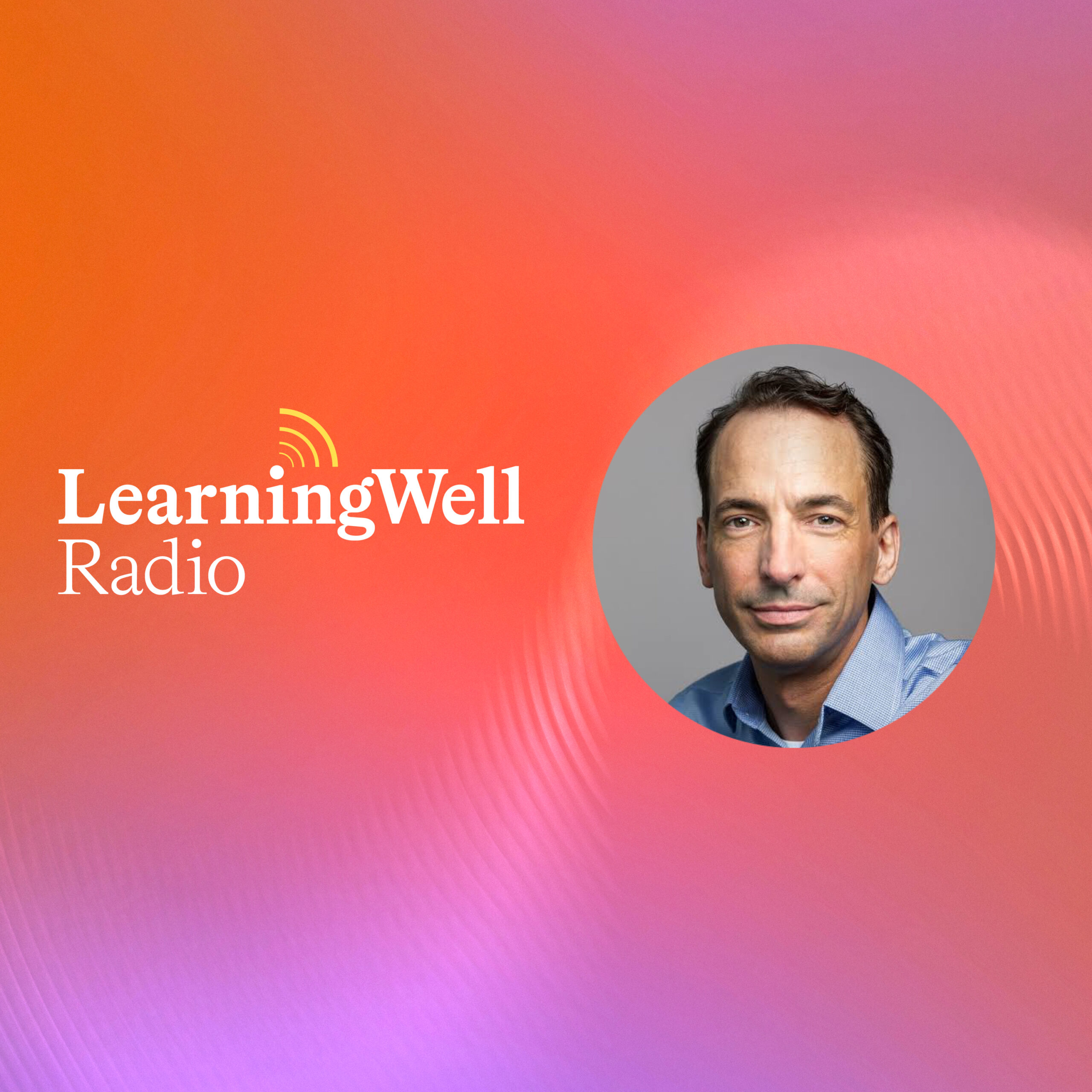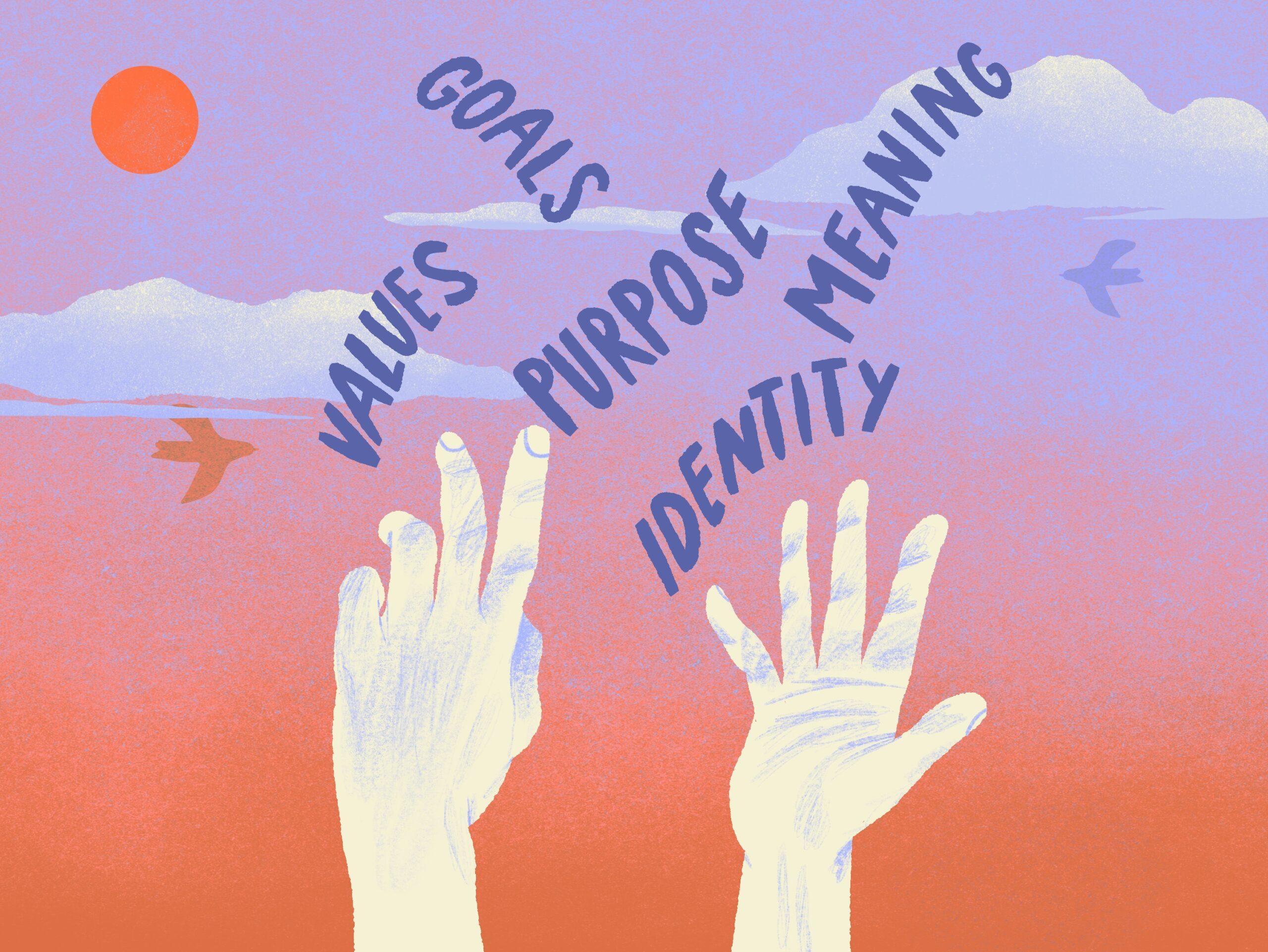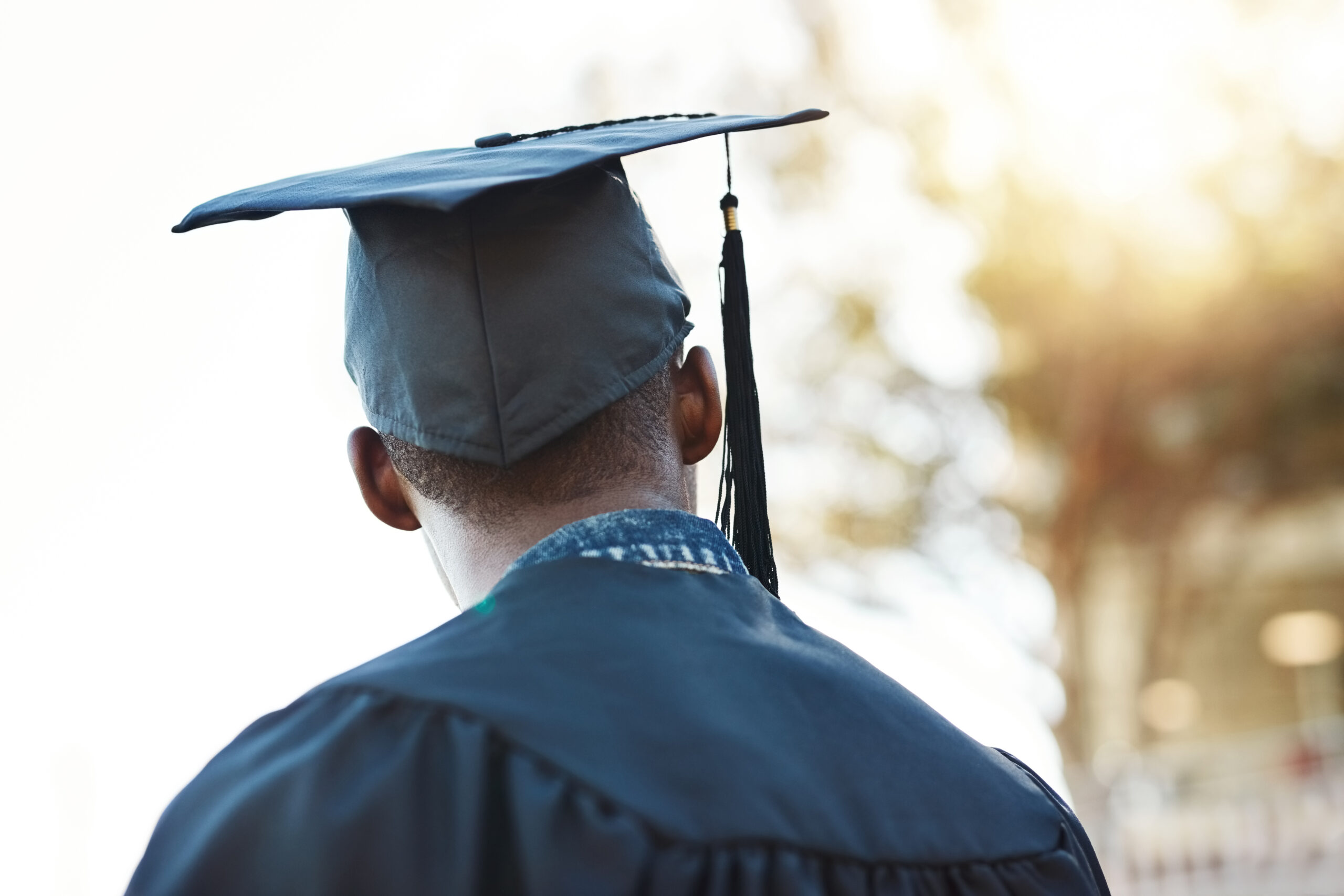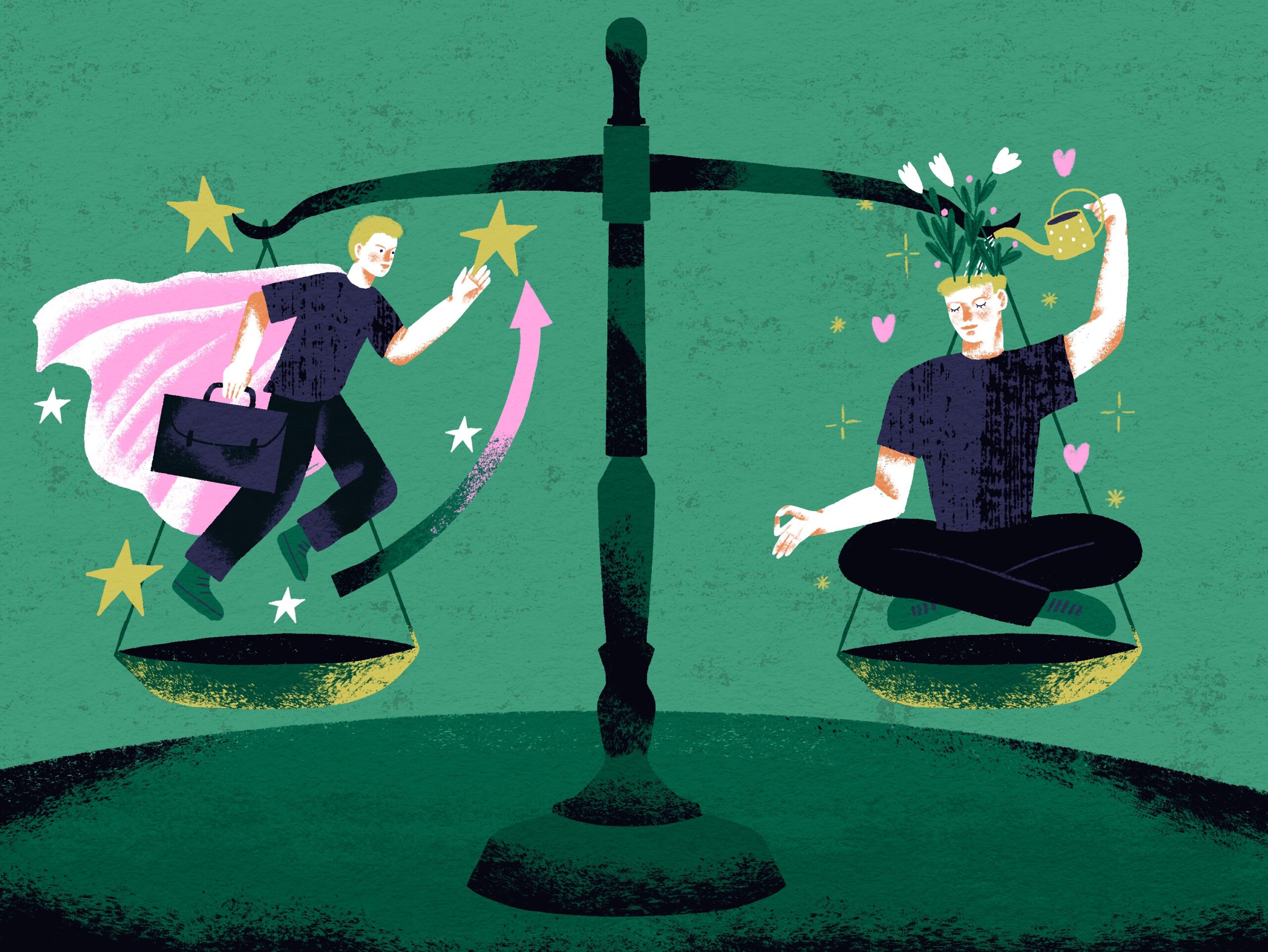The following is a transcript of LearningWell Radio Episode 2: Interview with Paul Tough. You can listen to the episode on Spotify or Apple Podcasts.
Marjorie Malpiede: This is LearningWell Radio, the podcast of Learning Well Magazine, covering the intersection of higher education and lifelong well-being, I’m Marjorie Malpiede, the editor of LearningWell and your host today. Paul Tough is an author and journalist, widely known in the education equity space with books such as How Children Succeed and the Years That Matter Most: How College Makes or Breaks Us. Widely read, Paul Tough has become a national voice for making college more equitable, affordable, and accessible to all Americans, and holding up a mirror to higher education asking, “Can’t we do better?” He joins us today from the National Conference of the Coalition for Transformational Education where he delivered a keynote address. Paul, welcome to LearningWell Radio.
Paul Tough: Thank you. Great to be here.
MM: Let’s get started. So your book, the Inequality Machine and your New York Times article last fall and the public’s perception of the value of a college degree have really led the national narrative on this big question, right? Is college worth it? Why is it not for so many Americans?
PT: Well, it’s a great question and I mean part of what is complicated about this question is there’s the reality for whom it is worth it, and when and then there’s the perception that a lot of people have. And I try to stay in the reality though the perception is really important to a lot of families. But I think that what has changed is that the calculus, the sort of economic calculus of when college pays off has grown more complicated in the last couple of decades. So when you look at the sort of big picture number, the college wage premium that economists talk about, they point out the fact that on average people who have a BA in this country earn substantially more than people who only have a high school degree, about two thirds more. So that’s what the college wage premium is. So when you just look at that, college obviously pays off, right? It’s a great deal for everybody. However, a few things have changed. One is the cost of college, which then means that getting that benefit has a bunch of costs to it. But the other that I think is more crucial and is harder to measure is that the variability of the returns to college have changed. So that in the past, a couple of generations ago, didn’t really matter what happened in college. If you graduated, didn’t matter what your major was, even sort of where you went, those things mattered somewhat, but you were going to do just fine. But now because college has become more expensive, because higher education is more stratified, there are some people who with a BA, who are making a ton of money. And some people with a BA who aren’t making much more than a high school graduate, in fact some who are earning less than the average high school graduate. It’s additionally complicated by the fact that a lot of people don’t finish their college degree. And the numbers are really clear that when you start a degree and you borrow money and you don’t finish, you are not doing well at all. Economically, you’re probably earning less than the average high school graduate and about 40% of people who start a degree don’t finish. We can predict somewhat who’s going to and who isn’t, but for any one student, there’re just all these factors that make going to college a real gamble. And that just isn’t the way we think about college and certainly not the way we should think about it or want to think about it. We’ve been trained to think about it as this investment. That’s what we tell kids. It’s an investment, it’s like a treasury buying a treasury bond. In fact, for a lot of families it’s more like going to a casino. So you could win big but you also could lose your shirt. And that kind of uncertainty is emotionally, psychologically really unpleasant, painful for a lot of families, but financially it’s a real true risk.
MM: So I think this information that came to the fore is incredibly important. If you are thinking about this investment, don’t take this the wrong way, but it’s a bit of a downer, right? When you think-
PT: It is true.
MM: … about how we think about higher education. So in your book, you tell amazing stories about families who actually still believe that this is going to give them a better life. And in fact, the data show that in terms of public opinion of the value of college, a recent Gallup survey showed that 66% of Hispanics and 65% of Blacks said that a college education was very important compared to just 45% of whites. So I could read this through the lines that you’re rooting for these people and you hope that we get back to a place where we can still hold a college degree out as the ladder to upward mobility. But I guess my question is, Paul, what would be the two or three things that you would change about higher ed to keep that dream alive for these people you wrote about?
PT: Well, I mean I’ll talk about two or three, but there’s one that’s really the biggest.
MM: Go with the one.
PT: Which is cost. I mean, I think that is really what is so hard for these families. So yes, absolutely. I wrote about a lot of low-income students, including a lot of Black and Latino and Latina students. And for individual students it is still amazing how higher education, how completing a degree can change your life. I saw it happen again and again where students would just go from a really difficult economic background, four years of college, they have these opportunities that open up to them that are going to change their lives and change their children’s and grandchildren’s lives for generations. You can see this is what higher education is supposed to do and it does work absolutely for individual students again and again. The problem again is that the overall calculation now just has all this risk in it for a lot of families
And especially for low-income families, the risk has to do with cost and costs have absolutely gone up. I understand the economics that we shouldn’t just look at list price, that there’s financial aid, there are ways to save money. But for a lot of families, even the cost of public college with some good financial aid, it’s a big deal for those families. And going into 20 or $30,000 worth of debt, which is sort of what we tell students is totally reasonable. You’re going to earn that back. That’s really scary. And so I think that’s where we have to do better. We’re creating a system where those families, in order to achieve the American dream and in order to achieve their goals, it’s not enough for them to just work hard. They also have to invest a lot of money and it shouldn’t be that way. We don’t have that kind of risk in high school. There’s not that idea of like, “Well, you go to high school but you’re rolling the dice about whether it’s going to be worth it or not.” And so this is not a problem that any institution can change on its own, though I think institutions can do a lot to make a degree more affordable, to make the finances and tuition more transparent. But I think this is something we need to take on as a country to figure out how to make college much more affordable for millions of students. And that’s the way it always was, right? It’s the way it is in other countries. It’s the way it was in this country 50 years ago. We have just created this new model where higher education is suddenly this high stakes high risk game and it doesn’t make any sense and it doesn’t work for a whole lot of families.
MM: And you do a phenomenal job of unpacking the history around that. And I know we don’t have time for all of that, but people should read the book to get those kind of details. But I don’t want to simplify, but is the number one thing reinvesting from a public funding perspective in higher education? And I know that you do a lot of comparison to countries in Europe which are actually doing the opposite of what we’re doing, instead of sort of questioning the value, they’re kind of doubling down. So yeah, is that really what we need to be doing?
PT: Is what we need to be doing in terms of public investment?
MM: Public investment,
PT: Yeah, I think-
MM: And we saw that dip right after the recession, the Great Recession of 2008, 2009.
PT: Yes, there was a dip then, but I mean it started back in the late ’60s. Ronald Reagan who I think was the first to sort of say like, “Well, wait a second. The benefits from college go to a student. They don’t go to society. So why are the rest of us underwriting this college wage premium? Why are we paying for these certain people to be able to earn more than the rest of us?” It’s a very powerful sort of populist message and it’s made more powerful when a lot of students, a lot of families feel excluded from higher education. And that began this process of disinvestment in public higher education. Before that started in the ’60s and ’70s, the cost of going to the University of California, to any good public flagship institution was a few hundred dollars tuition and fees for a year. It was something you could work a minimum wage job in the summer and you could pay for your tuition fees. That seems like a good model. And again, that’s true in lots of other countries. And then there was this sort of progressive disinvestment in public universities, public higher education beginning sort of late ’70s and ’80s. And what public colleges found is that if they didn’t have money coming in from the state, they needed to charge more tuition. If they charge more tuition, people would still show up. And at the same time, we made debt easier get for students. And this sort of happened gradually over time. You’re right, the recession of 2008, 2009 sort of turbocharged it and continued that process, but there was a bit of a boiling frog quality. There was no one year where everything suddenly changed, but over time, the shift in public higher education just went from the public paying for it to students paying for it. And I think, I’m not clear, I think economists are not clear why the same thing happened in private higher education, but I think the two things are linked. As it became clear that people were going to pay more for public higher education, private higher education said, “Well, we need to and can do the same thing.”
MM: Right, right. So again, this is very concerning and disturbing because it leads to implications that could be pretty dire in terms of… to the extent that you care about things like equity or a civically engaged society, some of the things you talk about in your book. I’m going to ask you something more specific about the business model and have you stick with that for a minute. But I want to come back and also talk to you about some solutions. So one of the things that I think in terms of disturbing consequences is this idea that because of the higher education business model, which you described, if I got this correct from reading your book, it incentivizes schools to attract more high income students oftentimes over performance. But given that, what are we supposed to be doing about high performing low income students? You talk in your book about people as an academy having an interest and a desire to reach those students, but because of this business model, it’s complicated, right?
PT: It’s really complicated.
MM: That may be a complicated question.
PT: It is. I mean, in some ways that’s what the whole book is about. And what, it took me a decade to try to understand. I mean, when I started reporting the inequality machine a little more than a decade ago, it was what I felt was going to be the interesting story to track was the way that colleges changed the way they attracted high performing low income students. It was this moment, it was during the Obama administration, it was this moment, there was this big study that had come out that was on the front page of the New York Times by Caroline Hoxby in which he said that if you just send a packet to high performing low income students saying, “Here’s where you should apply, here’s a voucher for your waiver, for your application fees. They will go to more selective institutions and they will succeed.” And this was a big deal.There was a ton of philanthropy that got put behind it. College board got involved, but it was all premised on this idea that the problem was in the students. That the problem was that students and their families were making mistakes in how they were applying, that they just weren’t… they didn’t understand enough about college. They weren’t enough like us, the college people, and they were blowing it. And so all you needed to do was just nudge them. Let’s just remind them how much it would pay off and things would change. And that underwrote just many years of efforts by both colleges and nonprofits and the government to do things differently. And it did not work and it has not worked. And I think why it didn’t work is because that really wasn’t where the obstacles lay. There were some of that. Sometimes I think students didn’t know enough. Sometimes they didn’t have the right advising, all true. But really the obstacles were in the institutions that these selective institutions weren’t admitting these students, if they were admitting them, they weren’t giving them the aid that could make it reasonable for them to come. If they did come, they weren’t making them feel welcome and create a sense of belonging for those students. And so over 10 years after all of these institutions and government agencies got together and said, “We’re going to flood the campuses with low income students.” The reverse has happened. There are fewer low income students at highly selective institutions than there were a decade ago. And so it’s clear what has to change. What has to change is those obstacles that exist within institutions. And a lot of it I think is financial. I think that it is very difficult for institutions to admit students who can’t pay full freight. If you’ve got two students to choose from and one’s going to pay full tuition and one’s going to pay zero, it’s a lot easier to admit the one who’s going to pay full tuition. And I think a lot of those institutions are not in great financial shape. Some of them obviously are in fantastic financial shape, but a lot of them aren’t. But I think there are all of these institutional pressures that is making it hard for those colleges to do what they really want to do as individuals, which is to admit more of those low-income students. And what’s frustrating to me as a journalist and as an American is that I feel like we wasted this decade with a lot of rhetoric about what it was going to take to admit more of these low-income students and nothing really changed. And so what my hope is what can happen next, is that we really take seriously the question of how to admit more of those students because they’re out there, they’re applying, they’re just being rejected or not being given enough aid to attend.
MM: Remind me, I know you go into this in the book and you give some really good examples, particularly around how they show up and how to receive them. And that makes a big difference in how they stick because as I think you point out, the absolute worst case scenario is for someone to take on debt, go to school, and then drop out with absolutely nothing to show for it. So a little bit more, Paul, for our listeners who are mostly in higher ed and mostly care about these issues, I would say not mostly. But if they’re listening to our podcasts, they care about these issues.
PT: Yep, yep, yep.
MM: Some words of advice then, I mean the economic model is one thing, but what more can they do other than when people show up and they can create welcoming environments for them, which is big. Any other advice?
PT: Yeah, so actually I don’t think we’ve made great progress in admissions, but I do think we’ve made great progress in student support over the last decade. So I did a lot of my reporting at the University of Texas, which I think has made great strides in creating communities that are really welcoming for first generation low income students. And creating not just emotionally welcoming, but actual that make it easier for those students to get the courses they need to negotiate the university bureaucracy in ways that will get them to the finish line. So I think we’re doing a better job with a lot of that. I think for your listeners, they’re at a level of expertise where it’s useful to know exactly which programs work. And what strikes me as more of a journalist and a lay person is that it’s not rocket science. It really is about removing obstacles, institutional obstacles, and then it is about the sort of emotional, psychological work of creating belonging. And sometimes that’s like ice cream socials and pizza parties, and it’s just the stuff that when you’re 18 makes a difference and makes you feel like you belong in summer programs, that let you get oriented before the first day of school. That stuff really matters and really makes a big difference to students. I’ll just say one other thing, which is that I still feel though I do think we’re making strides in that sort of student support world, there’s still this obstacle that admissions creates, which is just numbers. If you are a Black student on a campus that has five or six or 8% of the population, student body is African-American, it’s great if there are steps taken to make you feel welcome, but you’re still going to feel like a very small minority on a large campus. And so I think that’s true for some racial minorities, but I also think it’s true for low-income students, for Pell eligible students. I also think it’s true for rural students. I think it’s true for conservative students. I think it’s true for lots of students who just don’t fit the mold of-
MM: Feel like I belong here.
PT: Exactly. And so again, that’s partly a question of how you create a sense of belonging. It’s partly a question of how you do admissions.
MM: So I want to ask you a little bit more about the big question, is college worth it? And some of it is economic, some of it is PR. It’s this public perception of the value of college. Now this question is a little bit of a personal perspective, but so much of the public discussion on the value of higher ed is about cost, logically so for all of the reasons you’ve just described. I wonder if we who sort of work in higher ed and are cheering for the students, I wonder if we are not doing a good enough job talking about the other benefits that come from a college experience, right? So in our world, so LearningWell covers a lot about re-flourishing and mental health. We cover opportunities colleges have to improve students’ lifelong well-being and their engaged learning. So I don’t want to be in these two different worlds where we’re not actually acknowledging that if we don’t crack the affordability nut, we can’t do all these other great things. But I’m going to sort of challenge you to think about it in the reverse. So how do we work those benefits to the extent that you agree with me, that come from the years that matter the most? How do we work that into this public narrative? Do people care about that stuff? Do we need to talk about it more?
PT: Yeah, my perspective on it, I think maybe different than other people’s, and I wonder, I’m not sure if it’s supported by the data that’s out there. And I keep going back to the same themes, but I think it has a lot to do with cost, that I think that when college is expensive and creates a lot of debt, it’s very difficult for students to think about it any other way than what am I going to get out of it? And there is this sort of a cultural social expectation that sort of snowballs around that. But yeah, when I went to college, I was not thinking about what my first job was going to be. I wasn’t thinking about how I was going to make money. I wasn’t thinking about what the payoff was going to be. I majored in religious studies and I’m really grateful for all of that. I think that was the right way to go through college. For me, I think that it helped me, it helped create skills that turned out to be marketable later. I’m a big believer in the humanities and the arts. That was what everyone I knew was studying. And so yeah, I think that’s a really important story to tell. And again, even beyond what I was studying, I think that the social experiences I was having, emotional, psychological, cultural experiences I was having were a big part of what was going on in those years. So I think it’s important to tell that story, but I don’t think actually that eighteen-year-olds don’t get that. I just think they were like, when we’re handing them the bill, it’s really hard to say now, “Just go goof around and have fun, major in religious studies.” Because they know they’ve got to pay that off and their families do as well. So until we lower the stakes, it’s hard for them not to think about the high stakes.
MM: Yes, I think that is such a great point. And we talk a lot about the vocationalism and why it’s out there and how we might work against it, not against getting great work. We talk a lot about purpose in work and aligning one’s work, the people go to college to get jobs, right? So we can’t dismiss that, but we’d love obviously to see a little bit more fusion of the both. So the last question, and Paul, you’re just such a fantastic journalist, I can’t help but bring politics into this discussion.
PT: Great.
MM: So you point out that political ideology influences the public’s view of higher education clearly. So state legislators obviously are now making curriculum decisions. 80 some bills have been filed to eliminate DEI offices. I guess my question is what do you make of that in terms of how this affects what you wrote the book for, which is to try to enact some change to this formula that’s not working for anyone? And I guess my follow-up to that is, to the extent that you agree, is there a way to depoliticize this so we actually get to work on the real issues? What do you think?
PT: I think it’s a really, really important question. I think it’s a hard one to talk about in higher education. I think my take on it is probably not going to be totally popular among people in higher education. So when I was reporting, not the book, but this magazine article that came out last fall, I was interested in the political angle. So I talked to some conservative thinkers and tried to understand from their point of view what was going on politically in terms of college. And what really struck me, I talked to this one guy named Rick Hess from the American Enterprise Institute, who I disagree with on all sorts of ways. But when he talked about what higher education felt like to him and people who think like him, there was a lot of overlap with how I felt and how the low-income students I talked to felt. He just saw it through an ideological lens. He was like, “The game is rigged. It’s just designed to help certain people and create… It’s just this machine that perpetuates.” And so when I talk about how it’s a machine that perpetuates things, I think about it in terms of economic class. He thinks of it in terms of ideology. He thinks that there are these institutions that are governed by liberal elites and that use higher education to perpetuate their thinking, right? I don’t agree with that in lots of ways, but I do understand where it’s coming from. And the data is really clear was I was struck and I wrote about it in that article. College campuses really are really liberal places. And so it is true that if you’re a conservative student or a conservative family, it’s hard to feel welcome in the same way that it’s hard to feel welcome for a low- income student or an underrepresented minority student on a college campus. And so the difference though is that in terms of politics is I think in some ways it’s even more salient.
I mean, it’s debatable how this is going to play out in private colleges, certainly government and political parties are finding ways to interfere, to intervene with private colleges in ways those private colleges don’t always like. But in terms of public colleges, they are supported by the public. And so the public in the United States includes as many conservatives as it does liberals. And I feel like those institutions should reflect that. And of Europe, conservative student from a small town in Iowa, and you’re going to your flagship college, you should feel welcome. You should feel like this is a place where your ideas are respected and you belong. And there’s not going to be some lingo that you’re supposed to know and you’re not going to be accused of things in terms of… based on who you voted for and where you go to church and everything else. And I think that’s often not true on our most prestigious campuses. And to go even more broad, I think that this division that has happened only in the last 10 years or so. If you look at the, I think it’s a 2012 election, I think that was Romney and Obama. And if you look at the educational divide in that election, it was not the way it is now. So college grads were voting more for Romney and non-college people were voting more for Obama, kind of what you’d expect from Democrats and Republicans, but more it was just even, right? What education you had didn’t predict how you voted. Now, it absolutely does, and that’s bad for everybody. I think it’s certainly bad for the Democratic Party to be, I think, associated with higher education and educated elites. I think it’s bad for higher education to be so associated with one party, especially if the other party comes into power. And I just think it’s bad for the country. It’s bad to divide ourselves through education. Education should not be the thing that sort of affects how you vote and how you live your life to the extent that it does right now. So what can higher education do? I think they actually more so than some of the other things we’re talking about, I think they can change that. And I think that it doesn’t mean you have to sell out your principles and you have to give in to conservative politicians, but it does mean that you should think about diversity on your campus in terms of politics as well. And make sure that if there are, especially for public campuses, that I would say for everybody, if you’re a conservative student coming to that institution, there are things that make you feel welcome. And again, that doesn’t mean censoring yourself or not saying what you believe, but I think it really is important that those students feel welcome, that those families feel represented by that institution. And I think that could be the beginning, not only of lowering the political pressure on institutions of higher education, but it could be the beginning of trying to bridge that bigger divide, which I think is a real problem for the country as well as for higher ed.
MM: And that is a great message to folks in higher ed. I’m going to push back a little bit.
PT: Please.
MM: I think there is a movement within higher ed acknowledging this because what you’re describing on its merits, a good majority, I don’t know if it’s a majority, you’re this person who deals with the numbers, would agree with you. Because on its merits, they’re absolutely, they absolutely want each student to have their knowledge grow with facts, not with ideology. My question to you is there are these sort of good faith reasons why higher ed needs to change around, quote, unquote “wokeism”. I’m asking your personal opinion. Do you not though with all your reporting over the years, see that this public opinion around the cumulative effect of professors being liberal leaning is been utilized superbly by politicians?
PT: No, no, I think it’s really true. I mean, I guess I feel like it kind of doesn’t matter. You know what I mean?
MM: Yeah, I know what you’re saying.
PT: But I think at this point, I think there’s enough blame to be placed on higher education and enough solutions that higher education itself can enact, that I mostly… though I absolutely think that’s true. And if I was speaking to Governor DeSantis or something, I would be saying, yeah, much the opposite. And I feel like, yeah, it’s not a good faith effort in all sorts of ways, but the sort of conservative pushback against higher education,.but I think it is based on real public opinion. And so it doesn’t matter that those politicians are politician-ing, right? They’re going to do that and you can’t stop them. If you’re in a state with a governor and a legislature that are pushing on you the way… So I live in Texas, the way it’s happening in Texas, the way it’s happening in Florida and lots of other places. I would encourage higher education to deal with that as best they can, except yes, that a lot of it is politics. But then accept that it’s working partly because good at it, but partly because they responding to something very real in public opinion, that is coming from a genuine sense that higher education is exclusive elitist, not for them and deal with that, right? And so if you change public opinion and create a system we used to have where people who weren’t going to college still felt really proud of higher education of their state’s higher education of their state’s, flagship school. It wasn’t that long ago that there were lots of people who weren’t going to college, who felt like college is great. That it’s not for me, but it’s great that it exists. It’s great that my kids can maybe go there or my grandkids. You want that sort of feeling, right? And so I think changes have happened, some of which higher education itself is responsible for that has made that not happen. And that I think is reversible by higher education. And so the more that they can let go of the aggravation of people taking advantage of it, and the more they can think, “Well, what can I do to change the underlying feelings among Americans?”
MM: And I love a couple of things you’ve said there that I just want to emphasize. One is to ignore this very real public opinion of higher education right now is at your peril basically in terms of higher, is what I’m hearing you saying. And the other thing that I actually love you saying, when I sort of was sticking it to you on the political question, you said it doesn’t really matter. And you know what? I think that’s a really important takeaway because it’s irritating and it’s something to deal with. But if you really want to solve this problem so that more kids that you write about in your book can fulfill the dreams that they have and the stories you wrote about, which were so beautiful, if you really want that, it’s really not the point is it?
PT: It’s not. And so just to take a step back from that, I mean, if you’re at the University of Texas, Austin, where I am, and you’re provost or dean or a president and you’re having a deal with the actual legislature, of course you got to take it seriously, right? And you’ve got to figure out when to give in, when to push back. You have to deal with politics. But for public higher education as a whole, I think the more you can ignore the frustration of those politicians taking advantage of this and start to think like, “Well, how can we change what’s going on underneath,” the better.
MM: Right, let’s solve the problem. So this has been a fantastic interview with Paul Tough. And Paul, I don’t know what more to say other than, thank you so much for being with us today, and we’ll keep in touch with all your great work.
PT: Great. Well, thanks for this opportunity. Really appreciate it.
Ian Elsner: This has been LearningWell Radio, a production of LearningWell. For more information about our work, go to learningwellmag.org. And if you like what we’re doing, leave us a rating or review. LearningWell Radio is engineered by me, Ian Elsner. Thanks so much for listening.
















